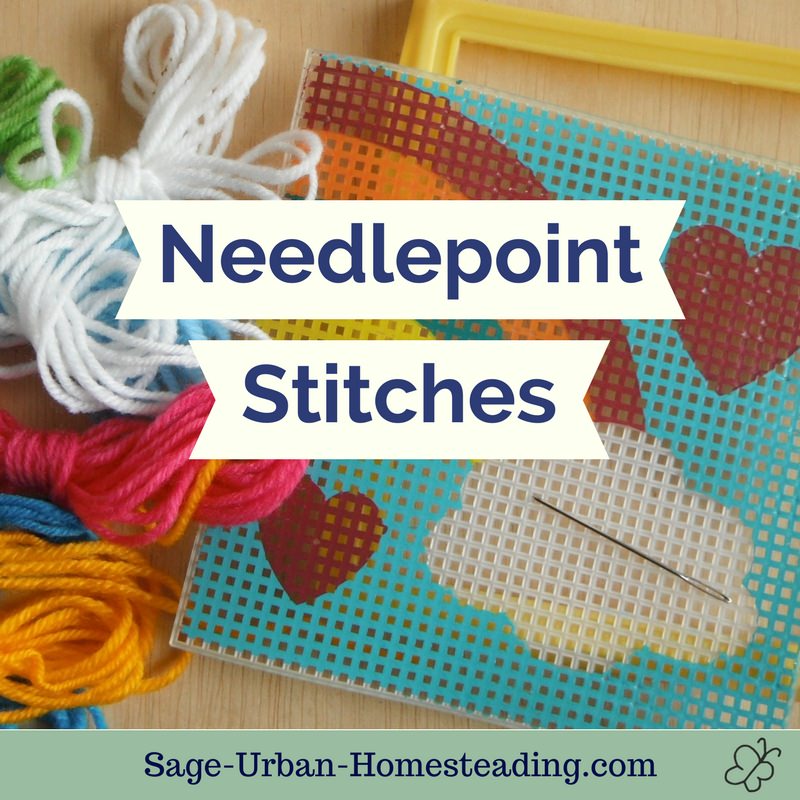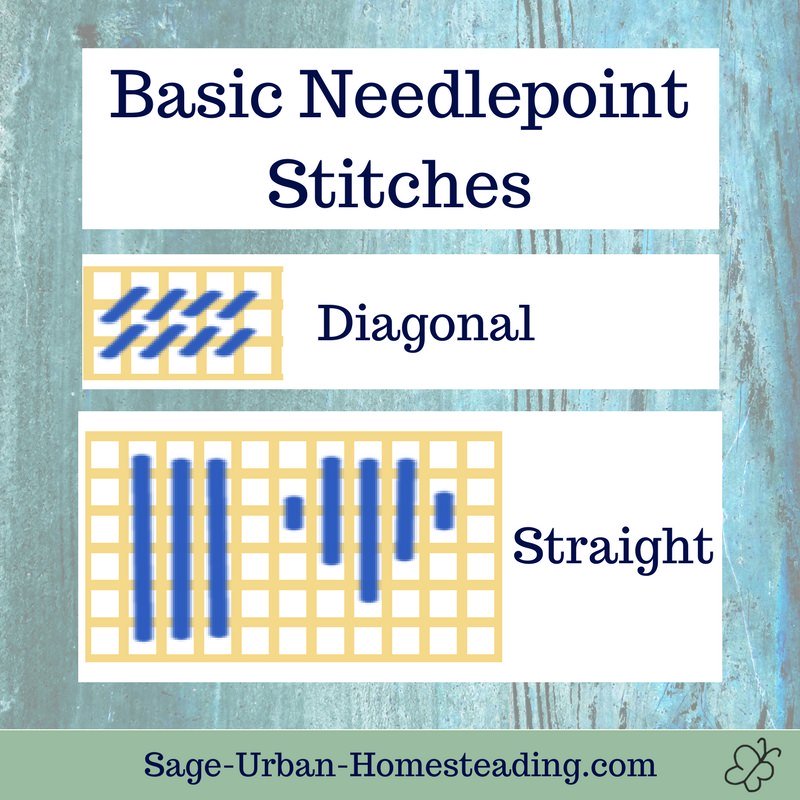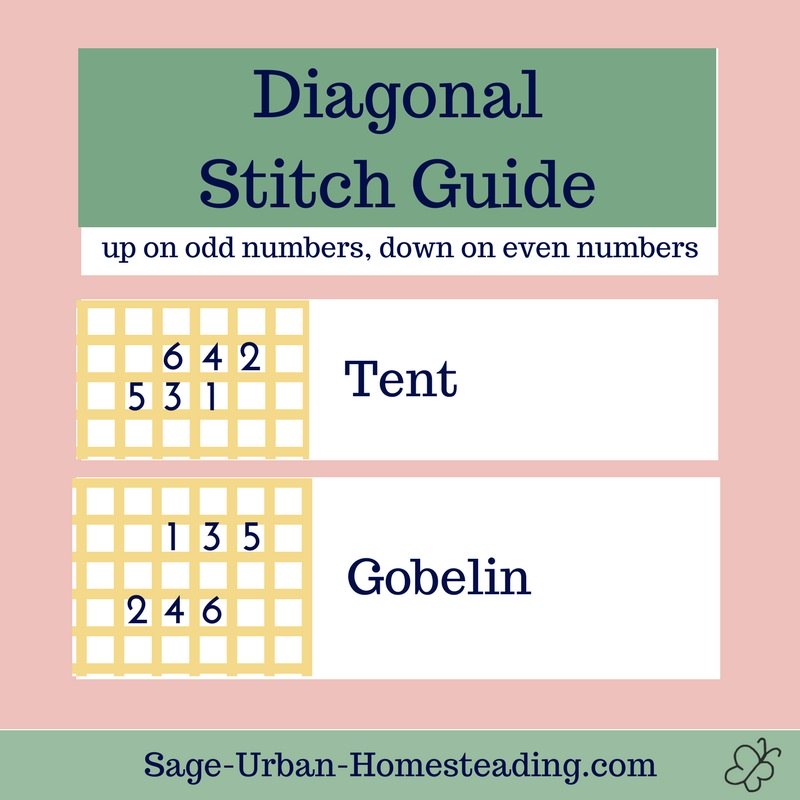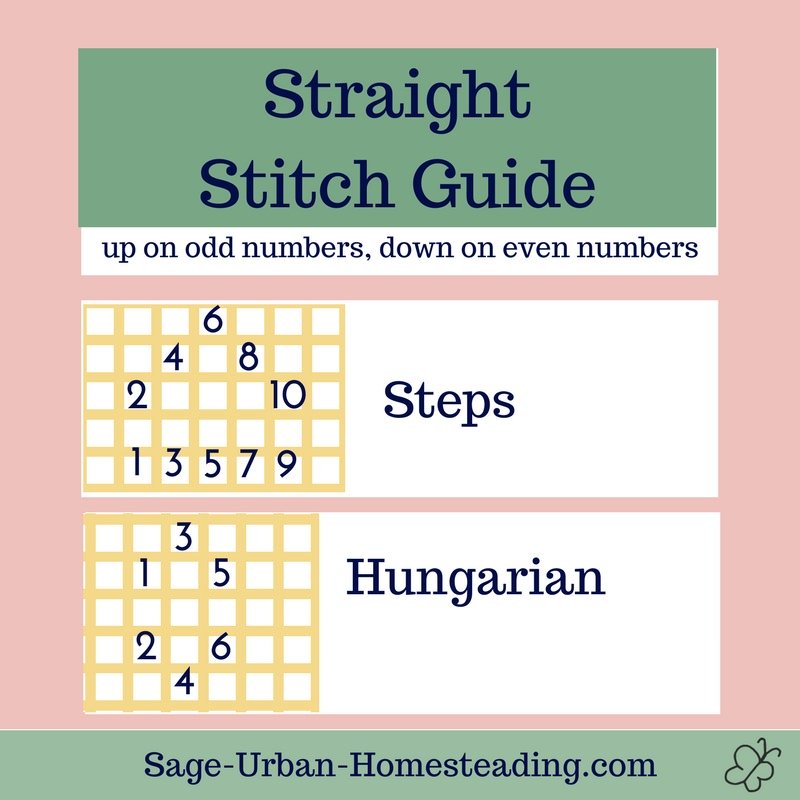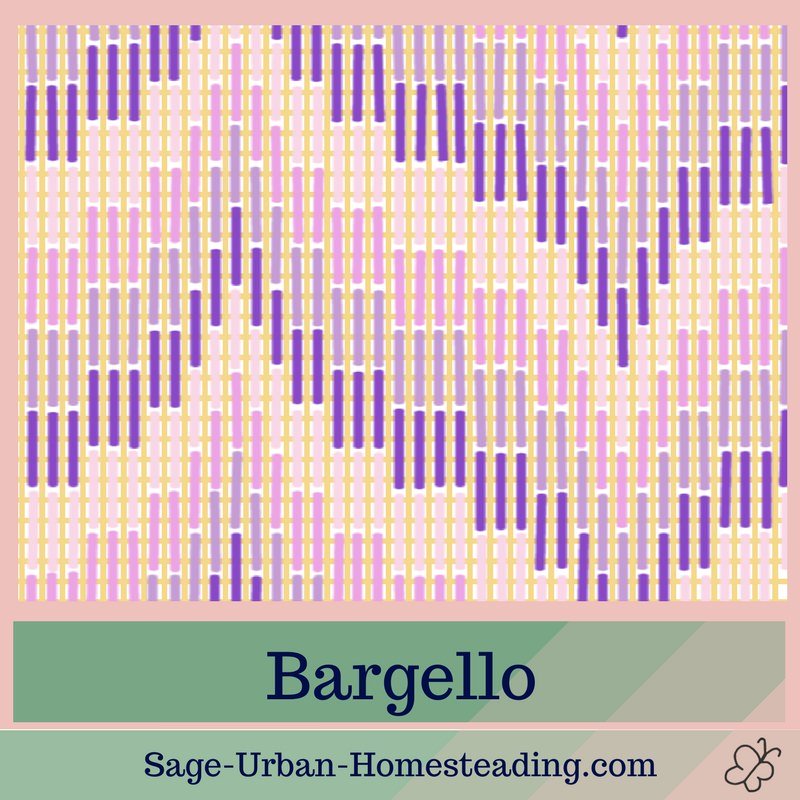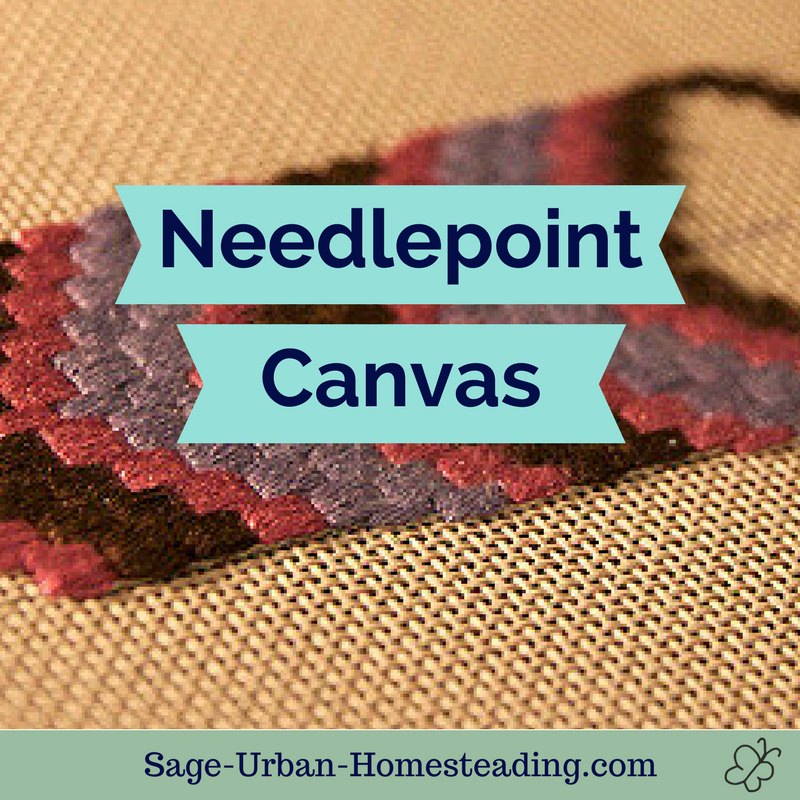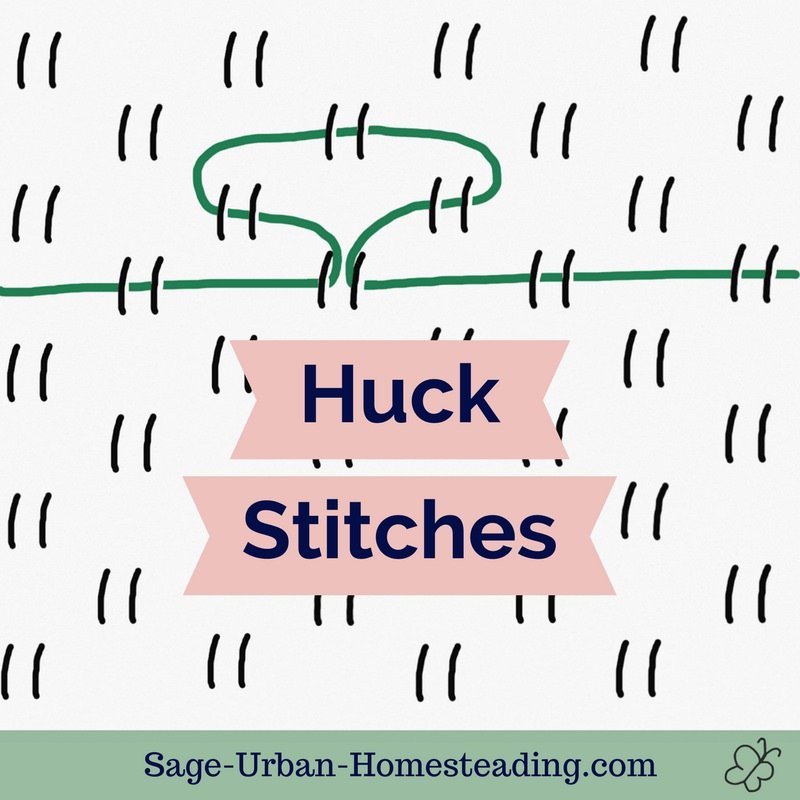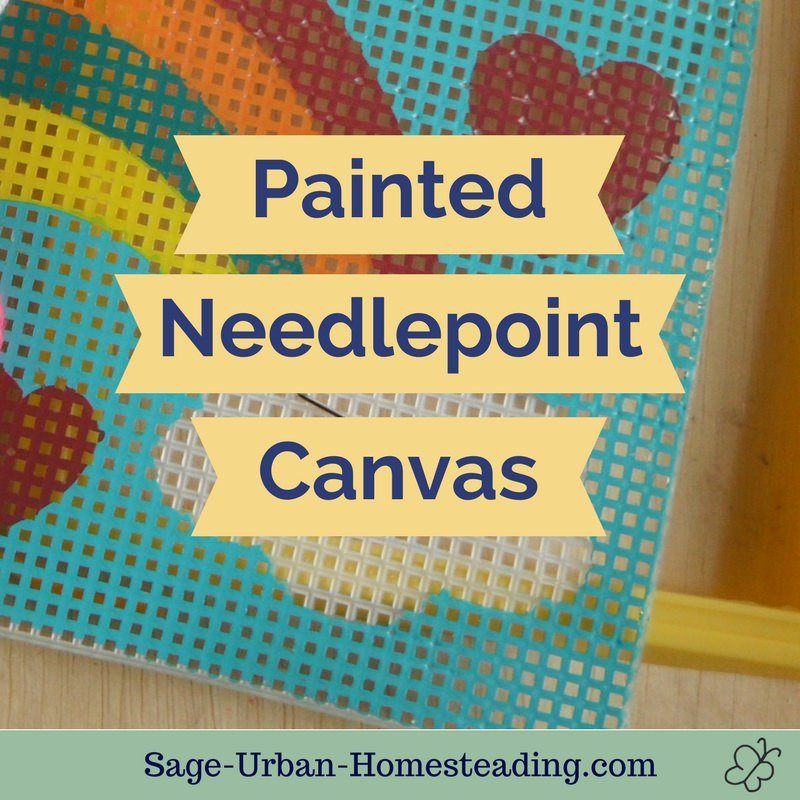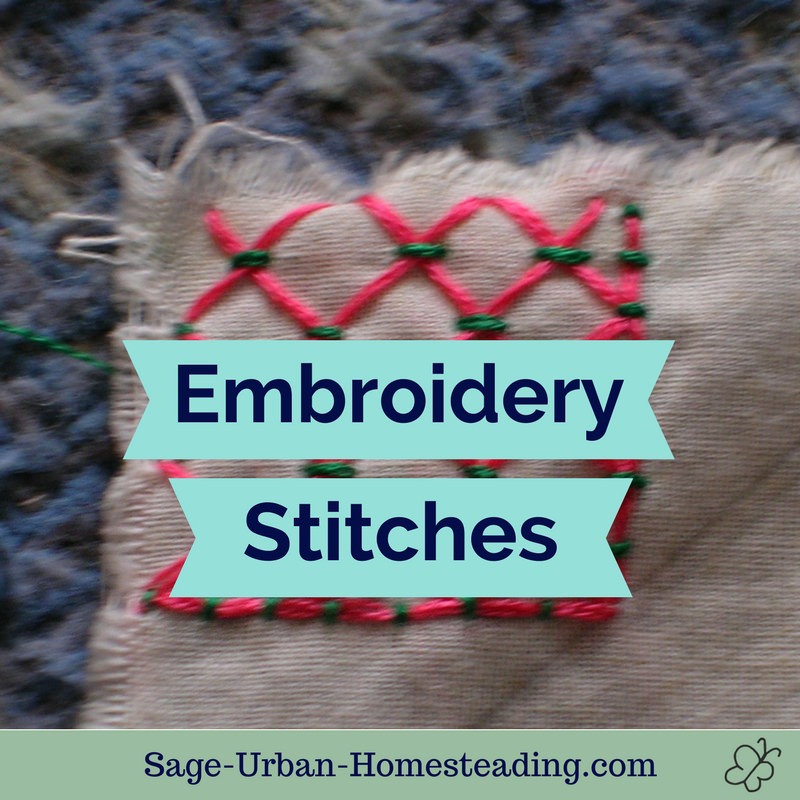FYI: I earn a small commission from some links and advertisements.
- Home
- Embroidery
- Needlepoint Stitches
Easy Guide to Needlepoint Stitches
The variety of needlepoint stitches can be overwhelming to a beginner, but advanced embroiderers know that all stitches are based on the same concepts. Find the most beautiful stitches and the right canvas to make your next project stunning!
Basically, needlepoint canvas stitches can go diagonally or straight.
They can be combined in different shapes to create special styles such as the bargello pattern.
Typically, the entire canvas is covered, but there are some patterns that use complex stitch designs spaced out on a decorative colorful canvas.
What do you like more, simple stitches with a complex color scheme or complex stitches with a simple color scheme?
I think all the different methods are beautiful!
Diagonal or Tent Stitches
The half cross-stitch and tent stitch are common diagonal styles for needlepoint stitches. They're flat so they're durable and wear well. The tent stitch is especially durable since the backside consists of long diagonal stitches, too, but it can distort the canvas.
You will need to work with it in a frame and block the canvas when done.
Gobelin stitches are longer, not as flat, and often layered for a tapestry effect.
When diagonal tent or Gobelin stitches are used, typically you work the entire canvas in the same stitch, only changing colors to create the design. This is also called Berlin woolwork.
Straight Stitches
An entire design can also be worked using only straight needlepoint stitches. It's a fairly easy method that can give satisfying results even for a beginner. Advanced stitchers can try geometric shape fill patterns known as Hungarian stitches.
Don't work a straight stitch over more than 8 canvas threads or it becomes too loose. They're best worked on single mesh with a heavy thread.
Canvas Stitches
There are some special slanted stitches that can only be worked on Penelope or doublemesh canvas. They resemble braids.
Other Block and Fill Stitches
There are as many fill stitches as you can imagine, all based upon arranging and layering the diagonal and straight stitches in different ways. The Leviathan and Rhodes Block are popular and elegant. See the popular stitches at The Spruce for more ideas!
Tramé, Tramme, or Tramming
This special style consists of canvas stitches with padding. The padding makes the stitches makes more durable and hard wearing.
Trame needlepoint is easy to arrange on double mesh by using the small rows for padding, but mono deluxe or interlock canvas will work, too. Simply do some long, horizontal stitches, then go back across working your row of decorative stitches over top.
Bargello
This special historical style is made with straight stitches worked in zigzags with color variations. The bargello pattern is also known as Florentine work, Hungarian point, or flame work.
It supposedly originated in Hungary during the medieval era then became popular throughout Europe after it was used in 17th century decorations for chairs in the Bargello Palace in Florence, Italy.
Tips for Success with Needlepoint Stitches
- As with other embroidery methods, leave a tail when you start working and stitch over it or go back and sew it in later.
- Check that the thread size is large enough to provide good coverage with the stitches you plan to use.
- Begin near the center and work outward, doing the motifs first and the background last.
I suggest that beginners practice the basic stitch types on plastic canvas with yarn first because it's easier to handle and easier to pull out mistakes, if necessary. Have fun!
